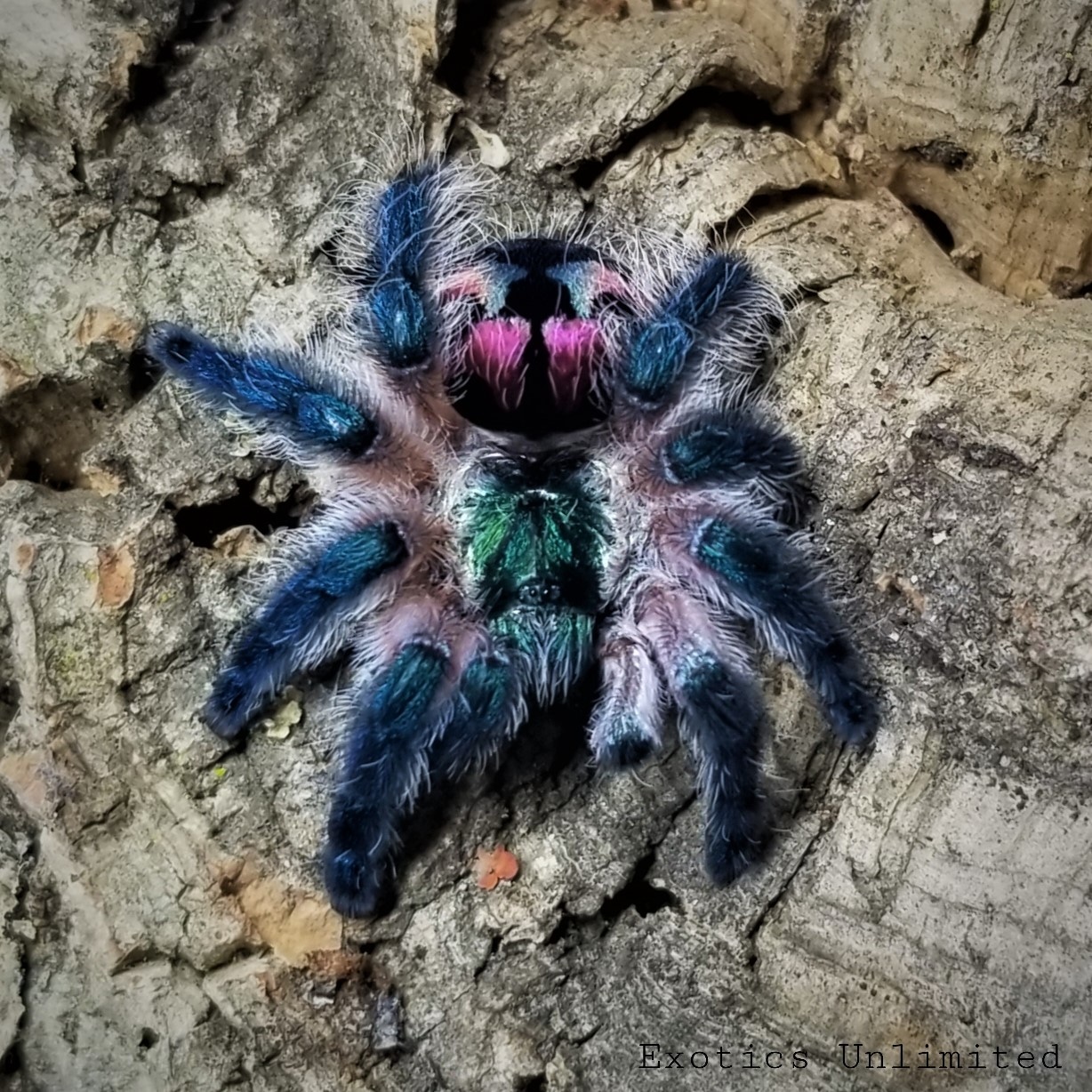
Brazilian Jewel Tarantula (Typhochlaena seladonia)
Typhochlaena seladonia is a species of aviculariine tarantula, and is the type species of the genus Typhochlaena.[1] It is unique as an arboreal spider that constructs trapdoors in the bark of trees.[2]
The common name is the Brazilian jewel tarantula
Few arachnids are as stunning as the Brazilian Jewel tarantula. With its vibrant colors and mild temperament, it is an excellent choice if you want to keep a calm spider pet.In this guide, I will take you through some interesting facts about Brazilian Jewel tarantula. Whether you are looking for information about its mating habits, diet, or temperament, you’ve come to the right place.
Without further ado, let’s dive in and learn more about the famous Brazilian Jewel Tarantula.
1. Scientific Classification
The Brazilian Jewel tarantula is scientifically known as Typhochlaena seladonia or T. seladonia. It also goes by other endearing names such as Candy Shop spider and Jewel Toe spider.
This tarantula is extremely rare and obtains its name from its colorful appearance.
Its natural habitat is in the rainforests of Sergipe and Babia in Brazil.
2. Appearance
The Brazilian Jewel is crowed as the most colorful and beautiful new world tarantula, making it a popular choice among hobbyists.
Different species come in different colors. At any given time, the tarantula can have as many as five colors on the different parts of its body.
Common colors found on a T. seladonia include distinctive pink, black and yellow. Others may have hues of reds, blues, oranges, greys, and everything in between.
The bulbous abdomen combined with the vibrant colors make this tarantula quite attractive.
3. Setae
Like most New World tarantulas, the Candy Shop tarantula is covered in long and short hairs known as setae or urticating hairs.
The hair coverings give this tarantula species a neat, streamlined outline compared to other species, which may appear shaggy and unkempt. This further adds to the beauty of the Brazilian Jewel.
Male T. seladonia are covered in more and longer setae than their female counterparts.
4. Molting
The Jewel Toe tarantula sheds its exoskeleton as part of its growth process. The shedding process is known as molting.
Young T. seladonia can molt several times a year as they grow rapidly. Once they become mature, molting reduces to just once a year.
Unlike Old World tarantulas, this New World species grows urticating hairs each time it molts. As is customary, the giant spider will stop eating and will become lethargic during the molting process.
Advertisements
20 December 2022
Advertisements



